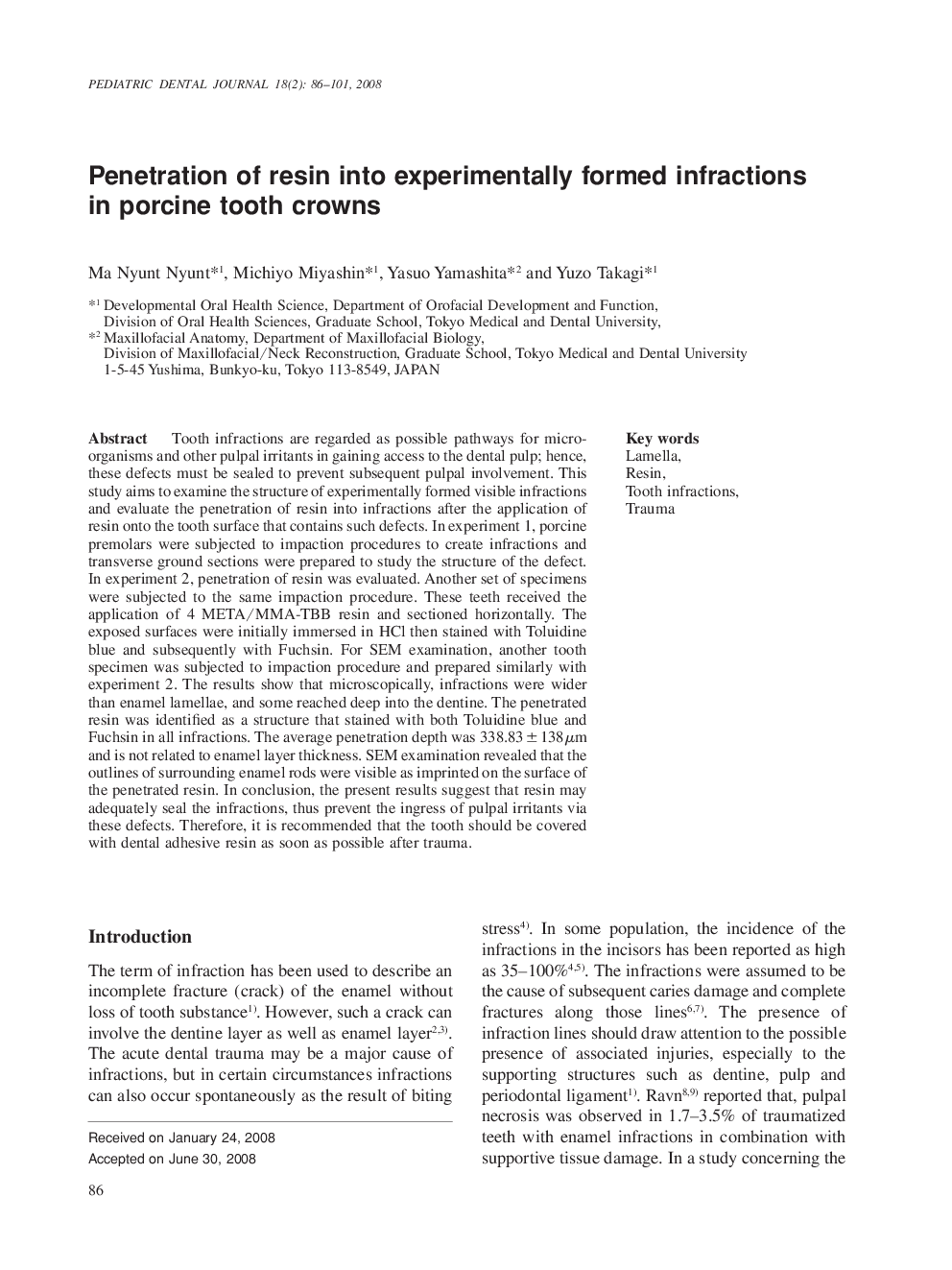| Article ID | Journal | Published Year | Pages | File Type |
|---|---|---|---|---|
| 3171708 | Pediatric Dental Journal | 2008 | 16 Pages |
Tooth infractions are regarded as possible pathways for microorganisms and other pulpal irritants in gaining access to the dental pulp; hence, these defects must be sealed to prevent subsequent pulpal involvement. This study aims to examine the structure of experimentally formed visible infractions and evaluate the penetration of resin into infractions after the application of resin onto the tooth surface that contains such defects. In experiment 1, porcine premolars were subjected to impaction procedures to create infractions and transverse ground sections were prepared to study the structure of the defect. In experiment 2, penetration of resin was evaluated. Another set of specimens were subjected to the same impaction procedure. These teeth received the application of 4 META/MMA-TBB resin and sectioned horizontally. The exposed surfaces were initially immersed in HCl then stained with Toluidine blue and subsequently with Fuchsin. For SEM examination, another tooth specimen was subjected to impaction procedure and prepared similarly with experiment 2. The results show that microscopically, infractions were wider than enamel lamellae, and some reached deep into the dentine. The penetrated resin was identified as a structure that stained with both Toluidine blue and Fuchsin in all infractions. The average penetration depth was 338.83 ± 138 μm and is not related to enamel layer thickness. SEM examination revealed that the outlines of surrounding enamel rods were visible as imprinted on the surface of the penetrated resin. In conclusion, the present results suggest that resin may adequately seal the infractions, thus prevent the ingress of pulpal irritants via these defects. Therefore, it is recommended that the tooth should be covered with dental adhesive resin as soon as possible after trauma.
